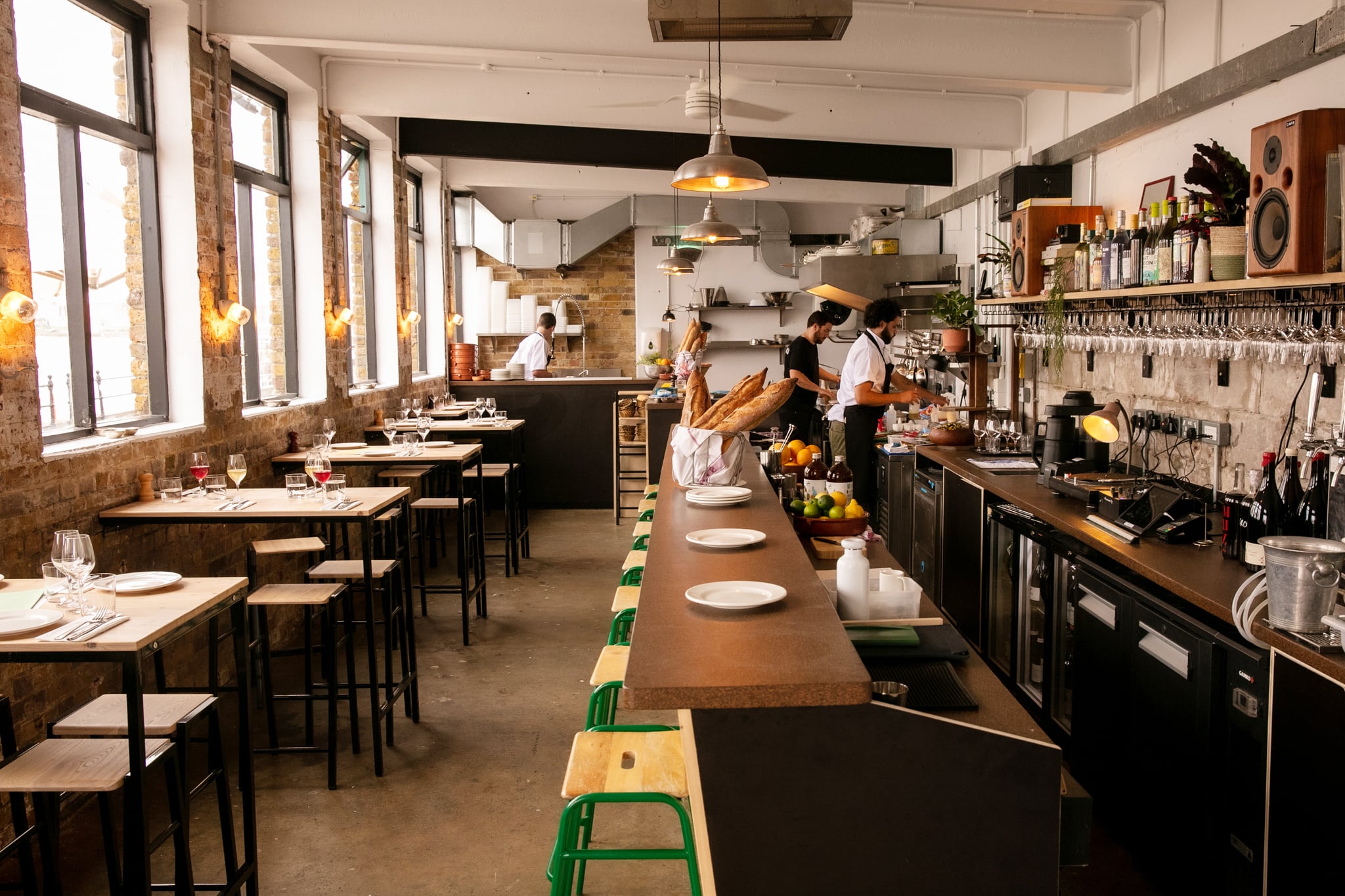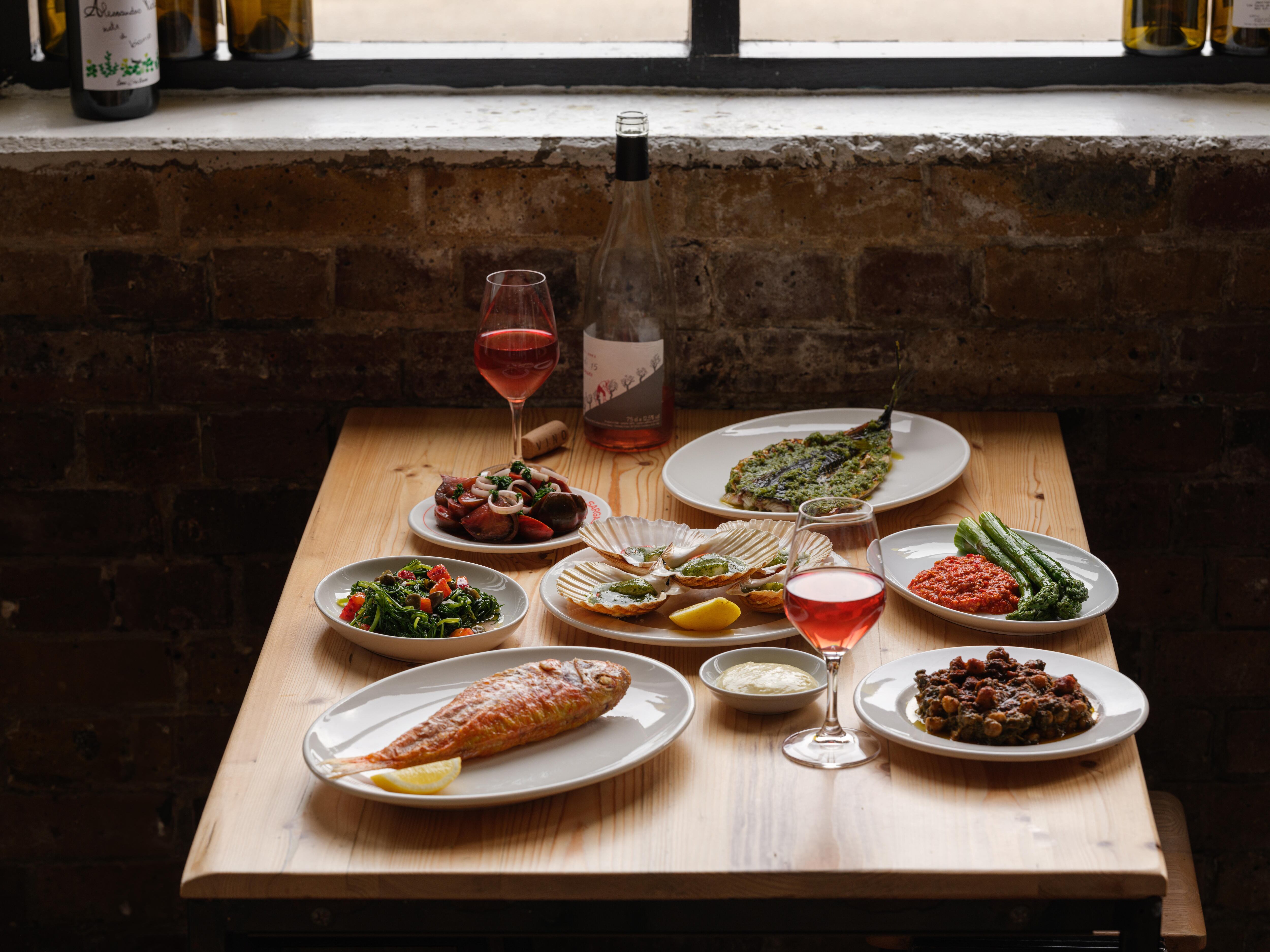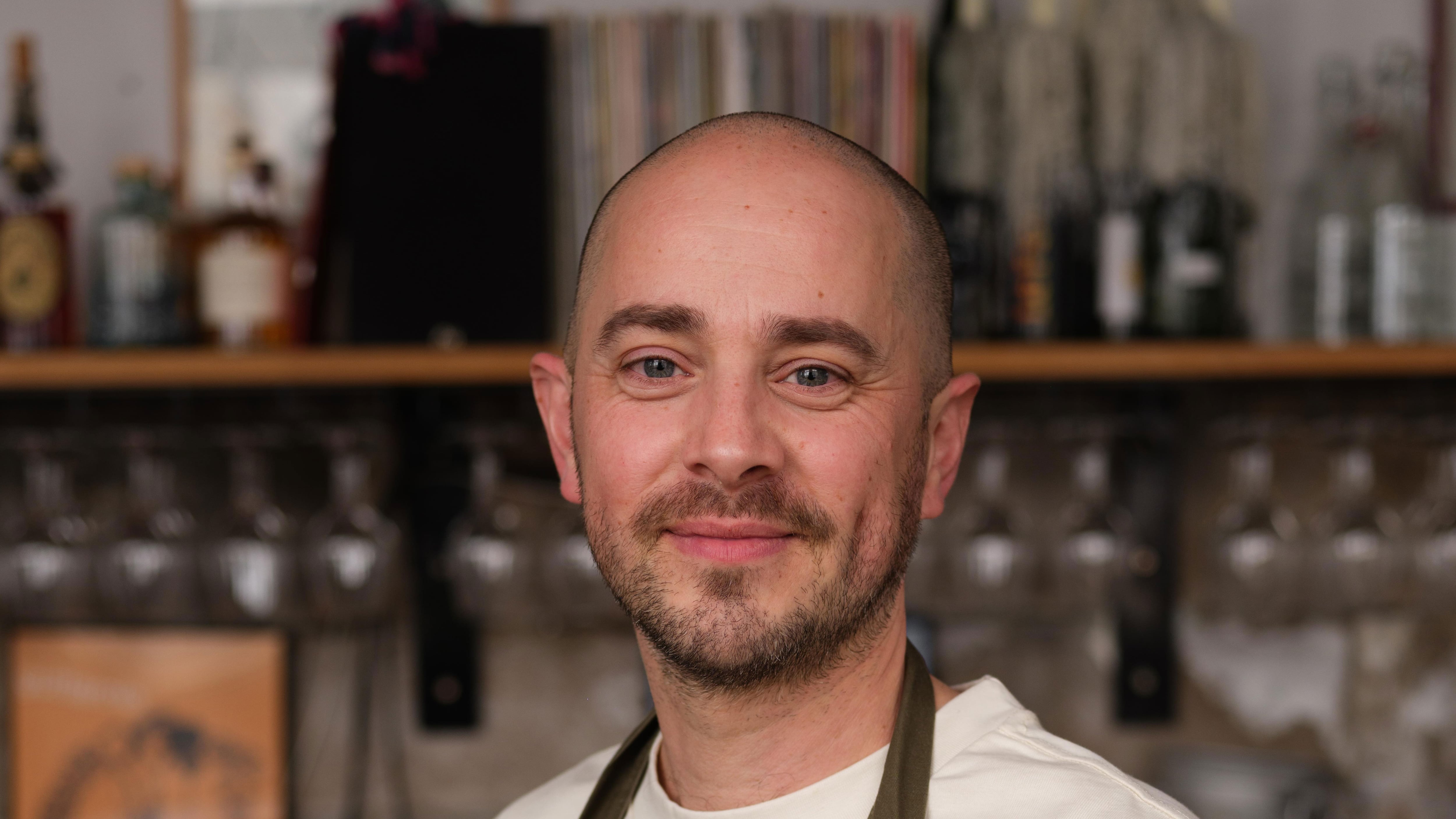How did the move to Margate come about?
I’ve known about Sargasso since it opened, and I’ve always followed what [owners] Ed [Wilson] and Josie [Stead] have been doing. I’ve always had this love for seaside places where you can cook local seafood in a simple way so I’ve had my eye on it. I used to go to Brawn [Wilson and Stead’s Hackney restaurant] as a customer and ended up working there briefly. We were talking about opening something in London together but then me and my family were looking at our life in London and exploring the option of leaving and living a more relaxed life in the countryside. We liked this part of England. When the opportunity for me to come and take over at Sargasso became available and it felt right.
How have you found relocating?
The move has been seamless. My working life doesn’t seem to have changed that much but all the other stuff has. Getting to work, life admin and generally doing stuff is a bit easier here. We live in Ramsgate and rather than using public transport and taking an hour to get the four miles to work as in London I drive to work with the windows open and listen to the radio. It’s more enjoyable. People seem to have a little bit more time and are a little bit more friendly.
How would you describe Margate’s restaurant scene?
I have two young kids so I’m relatively inexperienced in exploring Margate’s restaurant scene, but I would say there are quite a few similarities between Margate and east London – it’s got that feeling of quite quick expansion and a fast-growing restaurant scene. It feels quite hedonistic but also a bit fast and loose. It has this slight edge to it which is quite fun. The weekends feel quite vibey.

What are your plans for the restaurant?
I didn’t want to come in and make lots of big changes from the beginning. As a restaurant it operates well. The creativity has been led by Ed, and I’ve always had a lot of respect for what he does so I didn’t feel it needed any major shift. I see Sargasso as this kind of ideal seaside restaurant. At the moment it is using Andalusian Spanish style wine bars as a huge source of inspiration but ultimately it would be great to build some sort of outdoor grill so we can work with some larger cuts of fish Elkano style [a famous fish restaurant in Getaria, Spain]. It would be fun to push the boat out and use more expensive and luxurious products too. I don’t think it’s going to happen this summer though; it’s very much a case of step by step.
How’s business?
Recruitment has been a challenge. There’s not as big a pool of talent so we have to be realistic and work within our means. We’re open seven days a week for 14 services - weekends are busy and during the week is okay. Recently we’ve been lucky with the weather, which has a massive impact on us. Sargasso is in a building on the harbour arm and has a large outdoor seating area, so when the weather is good our capacity doubles.
Your career has spanned London and Australia. Tell us about it
I started cooking a bit later than most people. I went to university then did a bit of travelling before deciding I wanted to cook professionally at the age of 23. I enrolled in an apprenticeship scheme with Harvey Nichols and did that for three years based at the OXO Tower and stayed for an extra year. I then jumped in at the deep end and went to work at The Square with Phil Howard, which was full on, and then with Anthony Demetre at Arbutus, where I worked up to the role of temporary head chef. It was tough and Anthony expects a lot, which I respect. I then fancied a change, so me and my partner went to Australia. The world I entered over there was very different to the London scene. I met a chef called Luke Burgess who had just finished at Noma and was working at a restaurant called Garagistes in Tasmania. I was exposed to a whole different approach with lots of foraging, fermenting, charcuterie making and bread baking. I was there four and half years. It was a wonderful experience.

You returned to London in 2015...
I had a recalibration and wanted to come back and do my own thing. I approached the guys at P Franco, which was very much a wine shop that turned into a bar serving cheese and wine and told them that if they could put some induction hobs at the end of the bench, I could do a menu that worked with the wines. That happened in a bit of a whirlwind and things grew quite quickly from there. It was successful but challenging because it wasn’t really a professional set up, so I eventually moved on. I was going to open The Laughing Heart with Charlie Mellor but decided it was not right for me, and I almost did something with the guys at 40 Maltby Street but that didn’t happen, so I ended up opening Bright. Bright was really fun; I think it had a big impact on the industry.
P Franco and Bright closed in 2023. How did that affect you?
It was sad but we were not really doing our due diligence and making sure it was sustainable in the face of things like Covid. It had a big impact on me. It was tough to take and a very humbling experience that made me think a lot about how I manage and my place in the industry. I took some time out for reflection and to think about what’s important. I then did some consultancy for Cynthia [Shanmugalingam] at Rambutan [in Borough Market], but I felt that I wasn’t cooking anymore so I took the role at Hill & Szrok [in Hackney’s Broadway Market], which was small and had me cooking on my own, which I loved. Now I’m at Sargasso. My career has been a bit of a rollercoaster but I’m still very passionate and enjoy my job.


